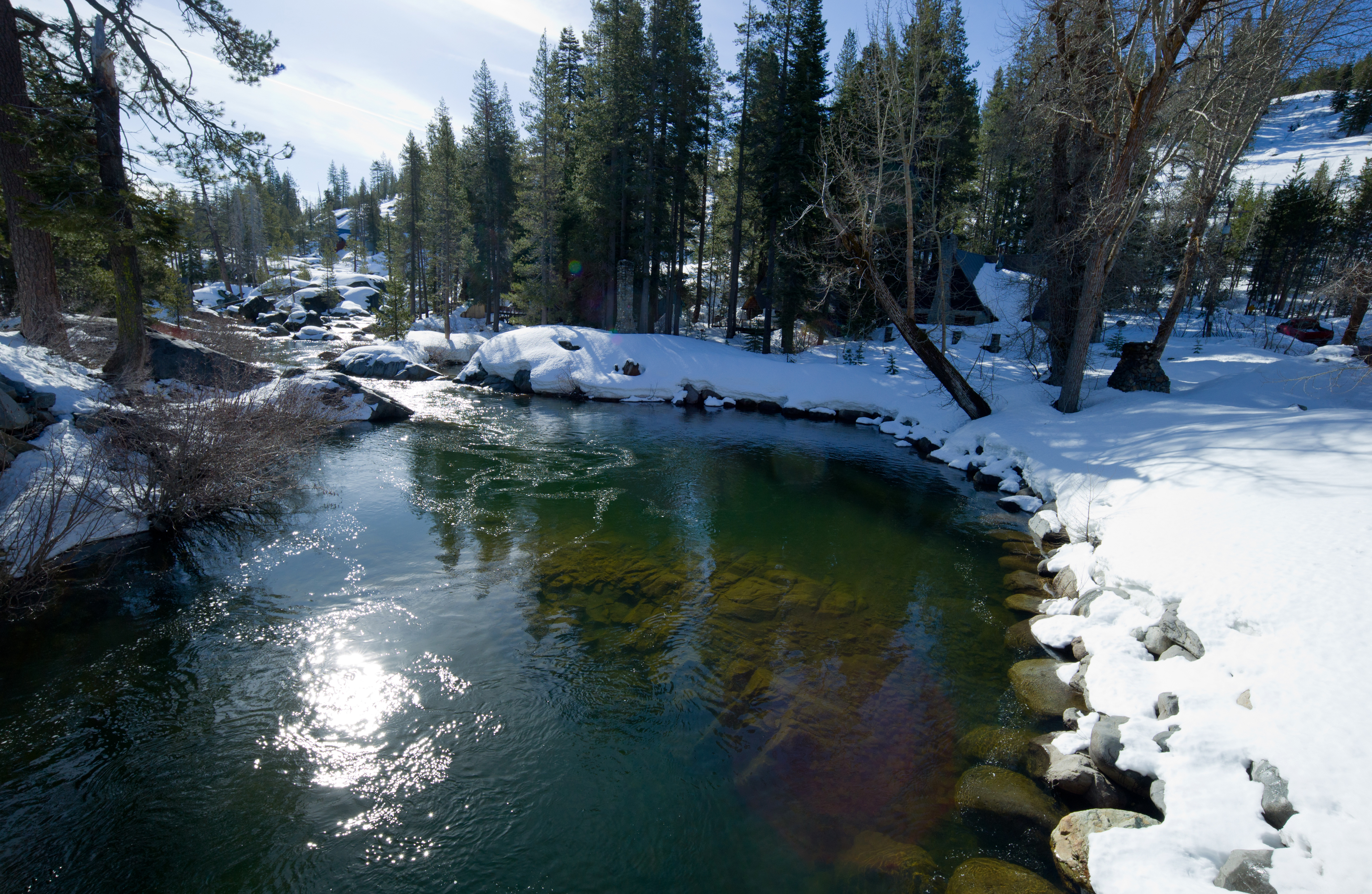Snowmelt Runoff

Credit: Kelly M. Grow/California Department of Water Resources
In the spring, with warmer air temperatures and more sunlight, the snowpack in the Sierra Nevada melts and releases water as runoff. This snowmelt runoff – which typically occurs from April through July – feeds the Sacramento and the San Joaquin Rivers, which serve as major sources of water for the state. For more information, download the Snowmelt Runoff chapter.
What does this indicator show?
Sacramento River spring runoff
This graph presents the percentage of total annual runoff that flows into the Sacramento River between April and July. Percentages are shown for each water year (from October through September of the following year).
- The fraction of snowmelt runoff that flows into the Sacramento River between April and July (“spring”) varies greatly from year to year, but over the past century has decreased by about eight percent.
- A similar decline has been observed for spring runoff into the San Joaquin River.
Runoff in a Sierra Nevada mountain stream in Placer County, taken April 17, 2012.

Credit: Dale Kolke/California Department of Water Resources
Why is this indicator important?
- Spring runoff has historically provided about one-third of the state’s annual supply for agriculture and urban needs.
- Increased tree deaths and wildfires have been linked to declining snowmelt, warming temperatures, and changes in precipitation patterns.
- Reduced streamflow impairs cold water habitats, making conditions unfavorable for fish such as trout and salmon.
- Changes in the timing of peak runoff challenge California’s water management infrastructure, which was designed for historical conditions.
What factors influence this indicator?
- A changing climate affects the timing (and volume) of snowmelt runoff. During the winter, warmer temperatures mean less snow and more rain, resulting in less snowpack. The earlier arrival of warmer temperatures in the spring causes snow to melt earlier in the year. This causes reduced water availability later in the summer and fall.
Additional resources
- California Department of Water Resources, California Cooperative Snow Surveys Program
- California Department of Water Resources, Hydroclimate Report (multiple years)
